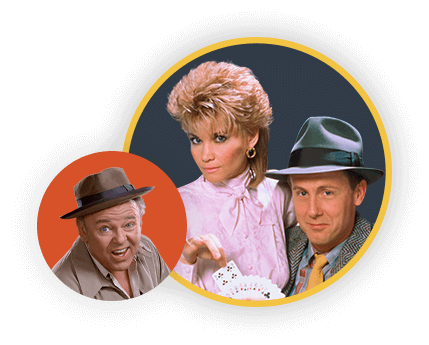Through the years: Each decade's contribution to modern women's fashion

Image: AP Images
Though each decade tends to be defined by its style, fashion is actually quite cyclical. It's believed that looks tend to come back to the runways 20 years after their inception.
While this has proven to be quite accurate, it's also undeniable that each decade contributes something to the fashion world that never goes away.
These are those eternal contributions to clothing. What pieces from decades past do you still wear today?

1940s: Bikinis
The bikini truly took the world by storm when it was introduced in 1946 by French designer Louis Reard. While the world was at war, there were significant rations when it came to fabric – but that didn’t mean women should have to forego the beach. While French women were more open-minded than the rest of the world when it came to wearing such a tiny garment in public, the swimwear was mostly just worn by celebrities until the mid-1950s. It was in the ‘60s, though, that the swimsuit really took off, due to the sexual revolution, as well as high-profile representations of the garment in movies like Dr. No and One Million Years B.C. The original design was called the “Atome,” a tongue-in-cheek reference to the size of the bikini.
Image: AP Images

1950s: Figure-highlighting sillhouettes
One of the greatest contributions to modern fashion that came to fruition in the 1950s isn’t necessarily a piece of clothing, but a cut. Until the 1950s, women tended to wear loose-fitting blouses, cinched by the skirt they wore around their waist. However, designer Christian Dior helped popularize blouses, jackets and dresses with nipped in waists, highlighting the figure of the women wearing them. During the ‘50s, full skirts also came into style. The width of the skirt in contrast with a nipped waist gave women the illusion of having an even smaller waistline. Consequently, this is the era in which the “hourglass” frame became enviable as well.
Image: AP Images

1960s: Miniskirts
If there was ever a place for short hemlines in the ‘50s, it was in science fiction. Though dames in pulp magazines and sci-fi movies typically wore skirts cut above the knee, this was reserved for space only. In the ‘60s, the mod look, inspired in part by these characters’ outfits took off and the miniskirt became a staple of the aesthetic. These skirts were huge in England, thanks to the efforts of designer Mary Quant (pictured up top, far left), and the U.S., also leading to the popularity of colored tights and hosiery as the hemlines crept up the thigh. It was considered improper to allow your garters to show, so there had to be an alternative!
Image: AP Images

1970s: Wrap dresses
In 1974, 26-year old Diane von Furstenberg created one of the most timeless designs in womenswear: the wrap dress. This versatile dress could be conservative for the workplace, or sexy for date night. Over 40 years later, the wrap dress is still selling, with new patterns and cuts each season. Talking to SPCR, von Furstenburg said, “It embraces the body in a very nice way. You can be proper and sexy at the same time.” At almost $400 a pop on average, most people are unable to buy an authentic DVF wrap dress, but the style has become so iconic that there’s no shortage of designers putting their own spin on it.
Image: Pinterest

1980s: Leggings
Is there anything more contentious than the argument about whether or not leggings are pants? Well, if it weren’t for the ‘80s normalizing wearing these stretchy bottoms outside of the gym, that might not even be an argument today. Capri-length leggings in a variety of patterns, fabrics and bright colors were a huge trend in the 1980s, typically worn beneath a denim skirt or an oversized sweatshirt. These were a comfortable way to make sure you’re covered, but also able to rock the latest fashions on top. Though women still wear brightly colored leggings today, the fashion industry is steering more toward thicker, opaque leggings in the style of “athleisure” that don’t require a long enough top or skirt to cover the rear.
Image: AP Images

1990s: Minimalism
The rise of “normcore,” consisting of simple, almost unstylish clothing started in the '90s and still reigns to this day. As a contrast to the bright colors and shoulder pads of the ‘80s, ‘90s fashion relied on looser, more comfortable clothing in earth tones and simple patterns, like floral and plaid. Even high heeled shoes featured thick, chunky heels for maximum comfort, while still allowing you to be stylish. This look still tends to be favored by young hipsters and fashion bloggers who talk about their small capsule wardrobe – though the bloggers might consider it to be more “minimalistic.”
Image: Sony Pictures Television




